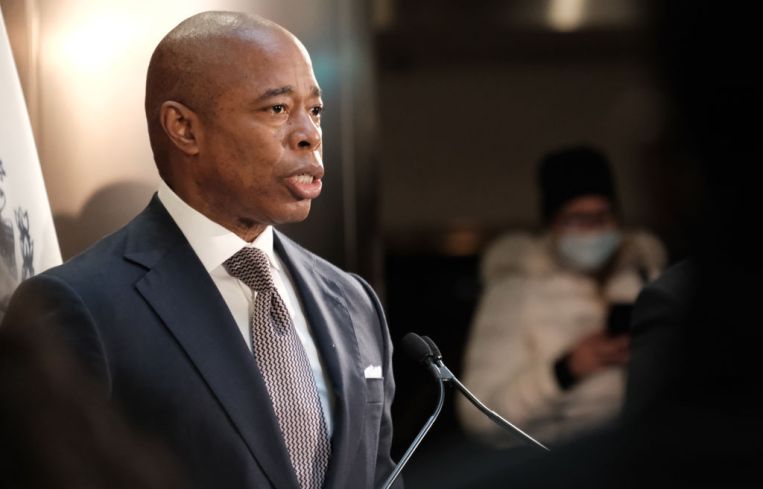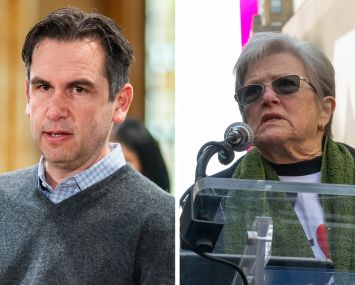Eric Adams Unveils Plan to Pump $5B to Increase Affordable Housing in New York City
By Mark Hallum June 14, 2022 5:43 pm
reprints
Mayor Eric Adams has a plan for delivering housing to New Yorkers and solving the ongoing homeless crisis in the city. But, whatever you do, don’t ask him how many units of affordable housing the city is going to build.
Adams announced Tuesday that his administration would allocate an extra $5 billion in capital funding for new affordable housing projects across the five boroughs, pushing the city’s total investment to $22 billion and bringing much-needed repairs to the New York City Housing Authority (NYCHA) system, which needs an estimated $40 billion worth of work.
His plan also includes cutting back on the amount of bureaucracy between people in need of affordable housing and access to resources, or “reducing administrative burden,” the mayor’s office said.
The administration laid out the plan in a 94-page report titled “Housing Our Neighbors.”
“We want to look at, No. 1, whether we are building for people at every income level, whether we’re reducing the number of rent-burdened households, and our measurement will focus on people, not just money,” Adams said during a Tuesday press conference.
“It’s often asked, ‘How many units are you going to build?’ … If that is one of the on-topic questions you’re going to ask me, don’t — because I’m not answering that,” the mayor told the press. Instead, Adams urged reporters to focus on how many people the plan would house (to which he responded, “As many as possible”).
Details were sparse as to where or how much the city would increase the amount of housing, but Adams suggested that his administration would dismantle regulations that inflate construction costs, such as zoning and maintenance codes. This could require new legislation and full implementation of the previously unveiled Building and Land Use Approval Streamlining Taskforce.
Through new zoning and other regulations, Adams says a wider range of unit sizes and housing types may be allowed in the near future such as residential conversions and accessory units, a plan scrapped by Gov. Kathy Hochul in February.
Jacquelyn Simone, policy director with Coalition for the Homeless, however, was hoping to hear about how Adams’ plan would address the need for supportive housing.
“While Mayor Adams’ plan has some laudable goals for addressing many of the problems encountered by homeless New Yorkers, more action and investment is needed to actually reduce homelessness,” Simome said in a statement. “Mayor Adams must dramatically expand the supply of permanent and supportive housing for homeless New Yorkers and extremely low-income households — which takes far bolder housing investments than are included in this plan.”
Adams also plans an overhaul of how Section 8 is accessed through the city’s Department of Housing Preservation and Development (HPD) as well as performing an audit of the agency’s income verification for the affordable housing lottery.
“This starts with measuring how quickly we move people into homes and how many New Yorkers we house — that is our priority, housing New Yorkers, and this plan reflects that,” Jessica Katz, chief housing officer for the Adams administration, said in a statement. “By including NYCHA and homelessness for the first time ever, we are elevating directly impacted New Yorkers into the heart of our housing strategies to ensure that everyone finally receives the safe, stable and affordable housing they and their families deserve.”
Rafael Cestero, CEO of the Community Preservation Corporation and HPD commissioner under former mayors Michael Bloomberg, was confident in the plan, regardless of the lack of details on housing production.
“In addition to affordable housing production, a truly comprehensive housing plan must also focus on the sustainability of our housing, work to address homelessness, and reinvest in our city’s public housing,” Cestero said in a statement. “Coupled with the major new funding for NYCHA being made available through the establishment of the Public Housing Trust, this plan represents significant progress toward improving housing for millions of New Yorkers.”
Mark Hallum can be reached at mhallum@commercialobserver.com.


